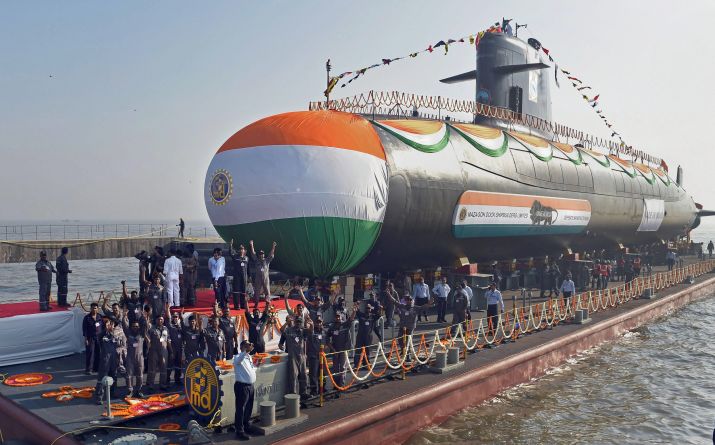INS Karanj | 06 Feb 2020
Why in News
The third Scorpene submarine, Karanj, will be delivered to the Indian Navy by December 2020.
- INS Karanj is a part of Project-75 and was launched in January 2018. It is currently in advanced stages of sea trials.
Project-75
- It is a programme by the Indian Navy that entails building six Scorpene-Class attack submarines.
- The programme has been undertaken with transfer of technology from French company Naval Group (formerly known as DCNS) at the Mazagon Dock Limited (MDL).
- The submarines in the P75 Scorpene-Class are powered by the conventional diesel-electric propulsion system.
- The first Scorpene submarine, Kalvari, was commissioned in 2017 and it would go for a normal refit after six years in 2023, during which time the Air-Independent Propulsion (AIP) would be installed.
- AIP technology is being developed by the Defence Research and Development Organisation (DRDO) to provide submarines long-range and extended endurance capabilities undersea.
- Second Scorpene Khanderi was inducted in September 2019.
- The remaining submarines (Vela, Vagir, and Vagsheer) in the series are in advanced stages of manufacturing and trials.
Air-Independent Propulsion
- Conventional submarines use a diesel-electric engine, and must surface for oxygen required for fuel combustion. If fitted with an Air Independent Propulsion (AIP) system, the submarine needs to take in oxygen less frequently.
- While many naval powers, including India, have acquired nuclear-powered submarines for deep-sea operations, conventional diesel-electric variants are considered useful for coastal defence. The latter are optimised for stealth, and their weapons and sensors provide for effective operations close to the shore.
- Diesel-electric submarines require them to come to the surface frequently to charge their batteries, their underwater endurance time is less. ‘Air-independent’ propulsion technology helps to make the diesel generator less dependent on surface air.
